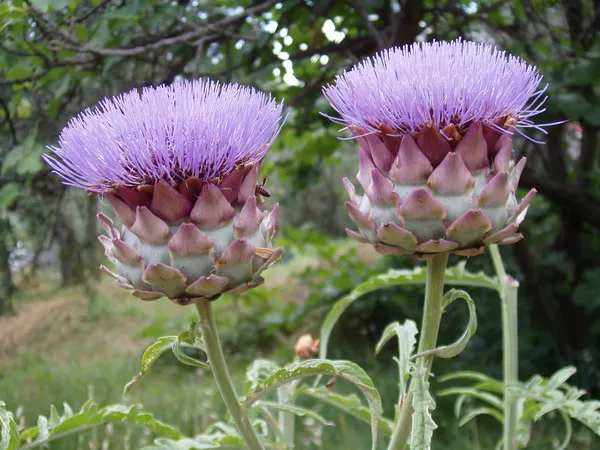In the vast tapestry of botanical diversity, bitterness often serves as a defense mechanism, deterring herbivores and safeguarding plants from indiscriminate consumption. This article embarks on a journey through the intriguing realm of bitter plants, unraveling the stories behind their bitterness, unique adaptations, and the diverse ecosystems they call home.
10 Most Bitter Plants in the World
1. Gentiana lutea:
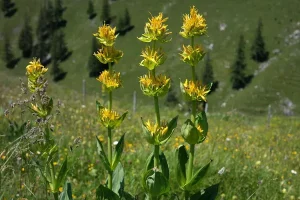
Bitterness Scale:
Gentiana lutea, commonly known as the yellow gentian, tops the bitterness charts among plants. Its roots, renowned for their extreme bitterness, have been used for centuries in traditional medicine and the production of bittersweet liqueurs.
Active Compounds:
The bitterness of gentian roots can be attributed to secoiridoid glycosides, particularly amarogentin. These compounds not only contribute to the plant’s bitter taste but also possess medicinal properties.
Cultural Significance:
Beyond its bitterness, gentian holds cultural significance in various regions. It is a key ingredient in traditional herbal remedies and alcoholic beverages like Angostura bitters.
2. Quassia amara:
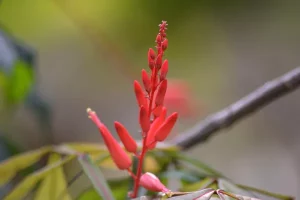
Bitter Principles:
Quassia amara, native to South America, is renowned for its intensely bitter wood. The plant contains quassinoids, bitter compounds that serve as potent insect deterrents and have been explored for their medicinal properties.
Traditional Uses:
Indigenous communities have long utilized quassia for its medicinal benefits. The wood is often employed in traditional remedies for digestive issues and as a natural insecticide.
Insecticidal Properties:
Quassinoids found in the bitterwood are toxic to a variety of insects, making it a valuable natural insect repellent.
3. Artemisia absinthium:
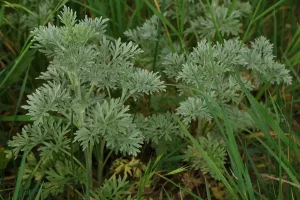
Bitterness and Absinthe:
Artemisia absinthium, commonly known as wormwood, is synonymous with the notorious spirit absinthe. The bitter compounds, notably absinthin, contribute to the plant’s intense bitterness.
Historical Controversy:
Absinthe, a highly alcoholic beverage infused with wormwood, gained notoriety in the 19th century. The drink’s alleged hallucinogenic properties sparked controversy and led to its ban in several countries.
Medicinal Uses:
Beyond its association with absinthe, wormwood has a history of medicinal use. It has been employed in traditional medicine for its purported anti-parasitic and digestive properties.
4. Berberis vulgaris:
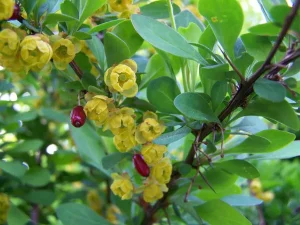
Bitter Berberine:
Berberis vulgaris, or common barberry, boasts a tartness derived from the alkaloid berberine. This bitter compound is not only responsible for the plant’s taste but also contributes to its medicinal attributes.
Traditional Medicine:
Berberis has a rich history in traditional medicine, where it has been used to address various ailments. Berberine, with its antimicrobial properties, is a key component of this bitter plant.
Culinary Uses:
While the berries’ bitterness might deter casual consumption, they are utilized in culinary applications, adding a tangy element to dishes and jams.
5. Cassia acutifolia:
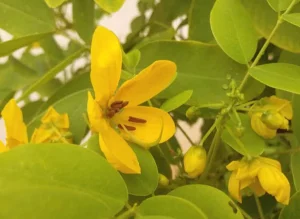
Bitter Laxative:
Cassia acutifolia, commonly known as senna, is celebrated for its potent laxative effects. The bitterness of senna is attributed to compounds like sennosides, which stimulate bowel movements.
Traditional Cleansing:
Senna has been embraced in traditional medicine as a natural remedy for constipation. Its use dates back centuries, and it remains a key ingredient in various herbal laxatives.
Cautionary Note:
While senna’s bitterness offers relief from constipation, its powerful effects necessitate caution in dosage to prevent potential side effects.
6. Ruta graveolens:
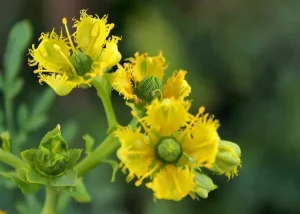
Alkaloids and Bitterness:
Ruta graveolens, commonly known as rue, is laden with alkaloids that contribute to its bitter taste. The plant has a rich cultural history and is associated with diverse medicinal and culinary uses.
Culinary Ingredient:
In certain cuisines, rue leaves are used sparingly to add a bitter and pungent flavor to dishes. However, its potent bitterness requires judicious use to avoid overpowering flavors.
Medicinal Traditions:
Rue has been incorporated into traditional medicine for its purported anti-inflammatory and antispasmodic properties. However, its alkaloid content necessitates caution in medicinal applications.
7. Coffea arabica:
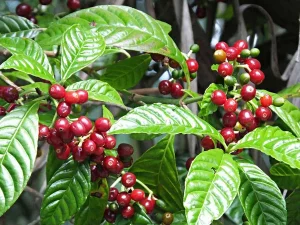
Bitter Caffeine:
Coffea arabica, the revered coffee plant, owes its bitter charm to caffeine and other bitter compounds. The unique bitterness of coffee has made it a global phenomenon, with intricate flavors influenced by factors like roast and brewing method.
Culinary Staple:
Coffee’s bitterness is celebrated in various forms, from the intense espresso shot to the milder flavors of a well-balanced coffee blend. Its bitter profile complements sweet and savory culinary creations.
Cultural Rituals:
Coffee holds a special place in cultural rituals worldwide, from the contemplative Japanese tea ceremony to the vibrant coffeehouses of Europe. Its bitterness has become a defining element of these rituals.
8. Cynara scolymus:
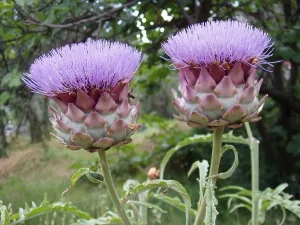
Bitter Cynarin:
Cynara scolymus, or the globe artichoke, owes its bitter taste to cynarin, a compound found in the plant’s leaves. Despite its bitterness, the artichoke is celebrated for its culinary versatility.
Culinary Delicacy:
The artichoke’s bitter notes are appreciated in various culinary preparations, from savory dishes to dips and spreads. Its unique flavor adds depth to Mediterranean-inspired cuisines.
Medicinal Roots:
Beyond its culinary appeal, artichoke leaves have been explored for their potential medicinal benefits, including liver support and cholesterol regulation.
9. Taraxacum officinale:
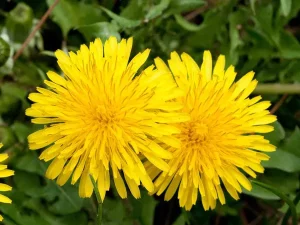
Bitter Taraxacin:
Taraxacum officinale, the ubiquitous dandelion, is known for its bitter taste attributed to compounds like taraxacin. While often considered a weed, dandelion boasts culinary and medicinal uses.
Culinary Exploration:
Dandelion greens, despite their bitterness, are embraced in salads, sautés, and teas. The bitterness adds a refreshing and slightly tangy element to culinary creations.
Medicinal Traditions:
In traditional medicine, dandelion has been utilized for its potential diuretic and liver-supporting properties. The bitterness of the plant aligns with its historical role in herbal remedies.
10. Galega officinalis:
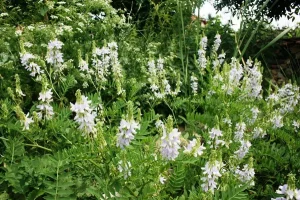
Metformin Precursor:
Galega officinalis, or goat’s rue, is historically linked to the development of metformin, a common medication for diabetes. The plant’s bitterness is associated with guanidine, a compound that influenced the synthesis of metformin.
Historical Medicinal Use:
Goat’s rue has a history of use in traditional medicine for various ailments. Its bitter taste, while making it unpalatable in large quantities, contributes to its potential therapeutic properties.
Modern Pharmaceutical Impact:
The bitterness of goat’s rue reverberates through time, with its role in inspiring the development of a widely used pharmaceutical, showcasing the interconnectedness of bitter plants and modern medicine.
Closing Notes
In the intricate dance between plants and the creatures they interact with, bitterness emerges as a formidable player. From deterring herbivores to influencing the nuanced flavors of culinary delights, bitter plants weave a complex narrative in the botanical tapestry. As we explore the 10 most bitter plants, it becomes clear that their bitterness is not merely a taste but a survival strategy, an evolutionary adaptation that has shaped ecosystems and cultural practices across the globe.
You Might Be Interested In:

